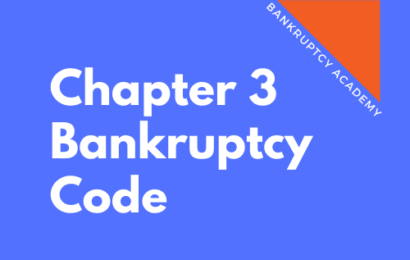
- Instructor: Attorney Bob Schaller
- Lectures: 7
Post-Engagement Client Communication System
This course focuses on client communications after the client has engaged the lawyer to file bankruptcy. The first lesson addresses written engagement letters, which are a must in every bankruptcy case. A written statement articulating the terms of the engagement reduces the possibility of misunderstanding and offers documentary protection if a disgruntled client claims the lawyer acted unethically. No oral representations. Lawyers are just inviting trouble when the inevitable disgruntled client complains that the scope of the relationship was broader than what the lawyer remembered it to be, or that the disgruntled client complains that the amount of compensation was lower than what the lawyer remembered it to be. Besides, Congress has imposed requirements upon bankruptcy lawyers relating to the engagement letter. First, a bankruptcy lawyer must execute a written contract with the client no “later than 5 business days after the first date on which” the bankruptcy lawyer provides services. A sample Chapter 7 engagement letter is featured.
The next two lessons focus on the two-step fact-gathering process necessary to complete the petition, schedules, and statements required to be filed with the Clerk of the U.S. Bankruptcy Court. Fact gathering typically requires multiple communications with the client. As discussed, each bankruptcy attorney should prepare a checklist of requested documents for clients to produce. The checklist should stress the importance of tendering all the documents on the list that are in the client’s possession and control. The checklist should identify a date by which the documents should be produced to the bankruptcy attorney. Another lesson focuses on the client questionnaire, which must be distinguished from the initial intake form completed at the time of the initial consultation. The initial intake form should be considered a brief summary of the prospective client’s financial position. The suggested client questionnaire is over 50 pages long and provides the details necessary to complete the petition, schedules, and statements. A sample client questionnaire is provided.
Other lessons present sample communication letters relating to the client’s duties and responsibilities AFTER the bankruptcy case was filed. One lesson presents communications that involve tendering the petition, schedules, and statements to the client and urging the client to review the documents for accuracy. Another lesson focuses on the § 341 meeting of creditors. Yet another lesson addresses post-petition responsibilities relating to mortgage payments, lease payments, anticipated outcomes, reaffirmation agreements, redemption rights, the automatic stay, adequate assurance deposits to utility companies, and the instructional course concerning personal financial management.
The final lesson offers sample evaluation forms to be sent to each client to help improve the bankruptcy attorney’s practice and increase profitability. Separate evaluation forms relate to the initial consultation, the § 341 meeting of creditors, and the conclusion of the case.





